Best duvet inserts and comforters 2025 – for all seasons and budgets
I've ranked and reviewed the world's best duvet inserts and comforters, with down and down alternative options to suit every sleep style
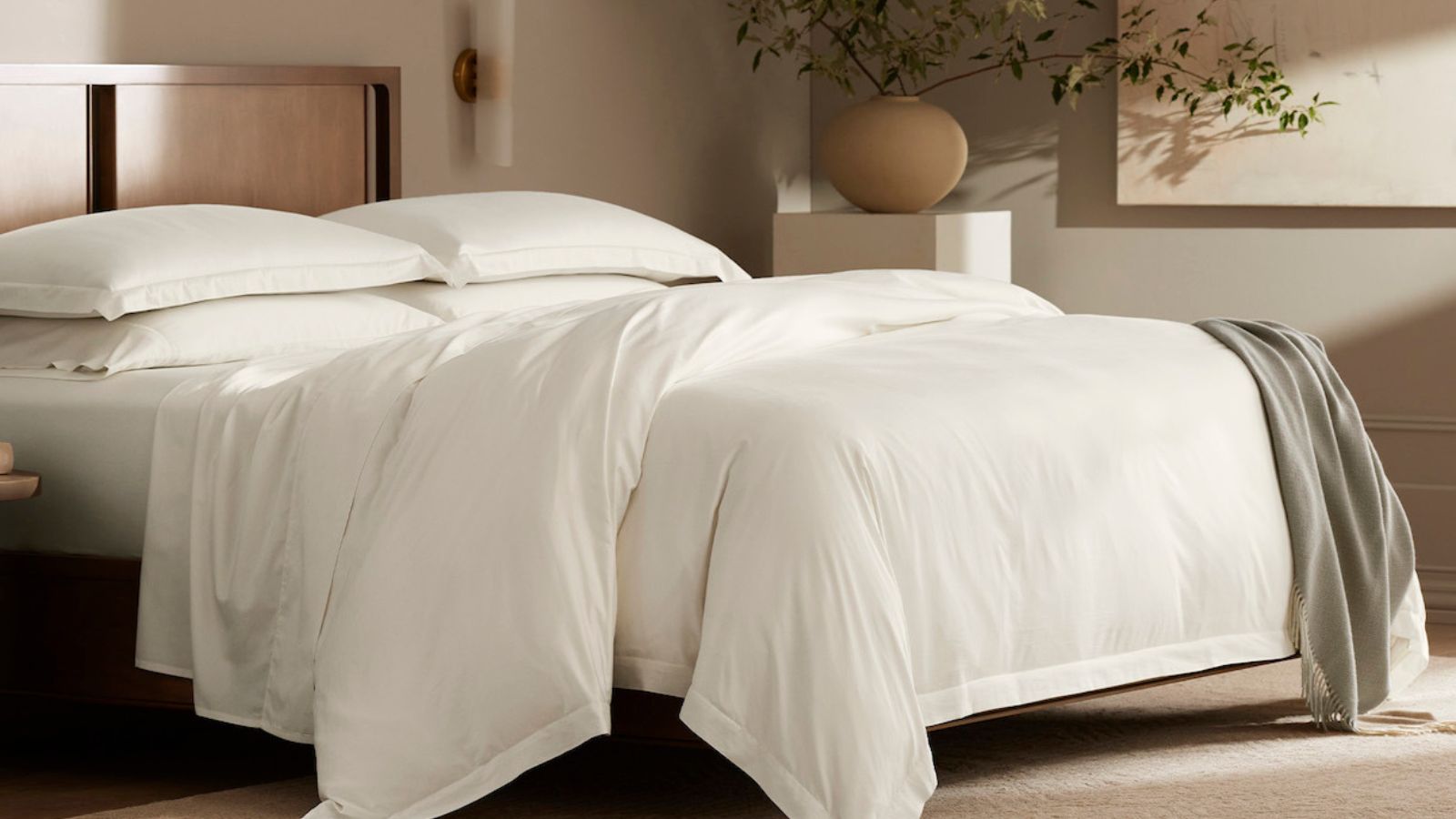

Recent updates
04/03. I've replaced the Saatva Heavyweight Comforter with the Sferra Somerset Duvet as 'the best duvet insert for cold sleepers'. I've also added results tables beneath each entry to help you visualize the difference between each duvet insert.
A bed isn't complete without a comforter. Along with a fresh set of sheets and a supportive pillow, the right duvet insert is an essential aspect of your bedspread. As we move towards longer days and warmer weather, you might be shopping for a cooling comforter to regulate your temperature this summer.
Before we begin, it always helps to define our terms. The difference between a comforter and a duvet is that a comforter can stand alone, while a duvet insert needs a duvet cover. If you're struggling to decide between the two, then you're in luck: we've weighed up the pros and cons of duvets vs comforters.
As Homes & Gardens' specialist sleep expert, I lead a team of expert testers in the search to find the world's best duvet inserts. I've narrowed it down to my top six to suit every season, every budget, and every style of sleeper. For the sake of a fair fight, each duvet insert is assessed against the same criteria: look and feel; thermoregulation; ease of care; and the all-important price. You might be able to save some money when you shop the bedding sales.
Best duvet inserts − 6 tested options, at a glance
Below, you'll find a bite-size summary of each insert, outlining who it suits, what it costs, and the most important pros and cons. Don't worry if you come across any unfamiliar terms: you can always cross-reference against my bedding jargon buster.
To learn more about a particular insert or comforter, keep scrolling, or press 'read more below' to shortcut to that section. There, I've listed the need-to-know specs, including fill type and density, before diving into the details of our testing experience.
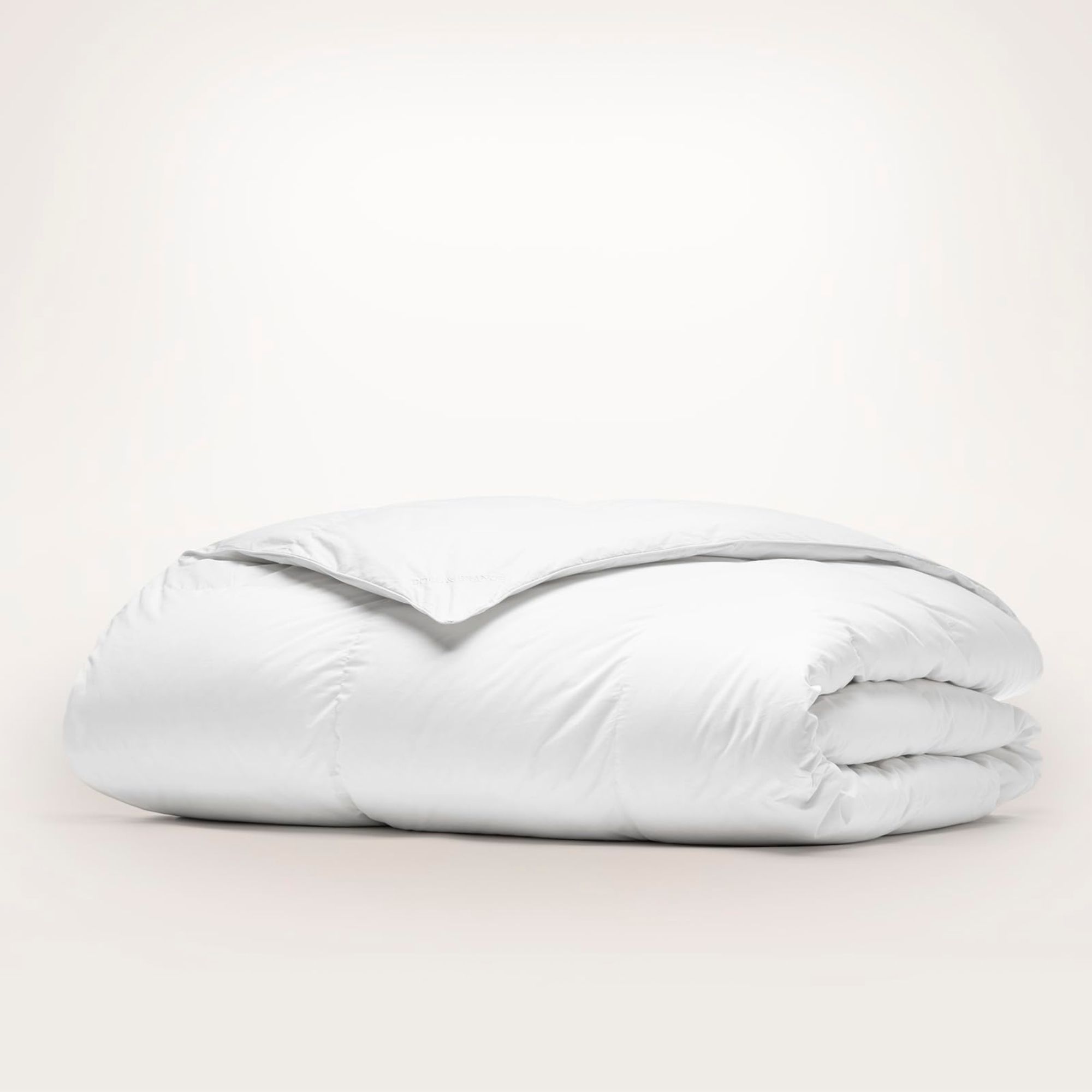
Our reigning champion for the title of 'best duvet insert' comes in three weights to suit every sleeper. Each insert is wrapped in a cotton shell that's soft on your skin and cool to the touch.
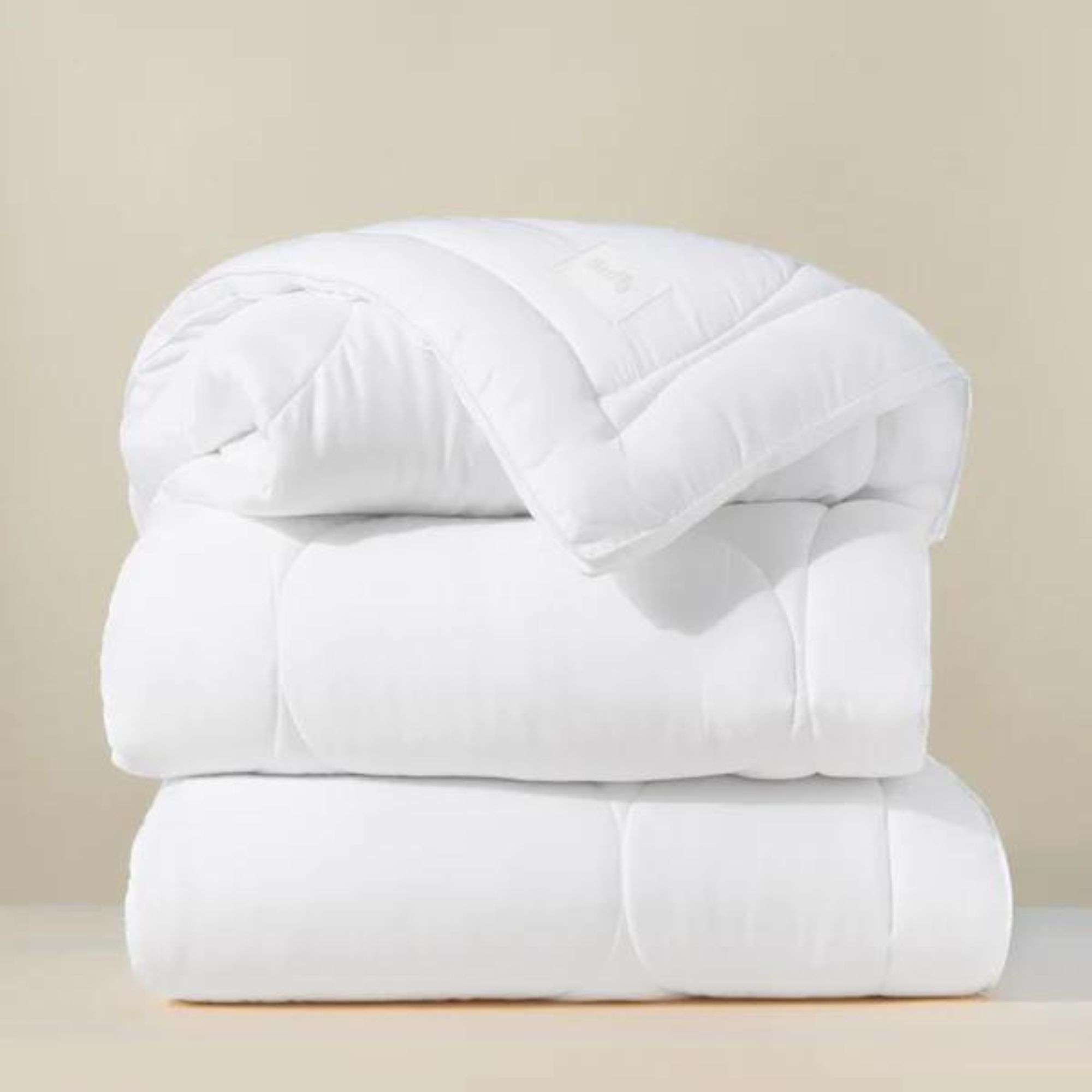
This down alternative duvet insert upcycles the plastic from discarded bottles and spins it into super-soft fiber-fill. It's a great option for vegans and eco-conscious shoppers.
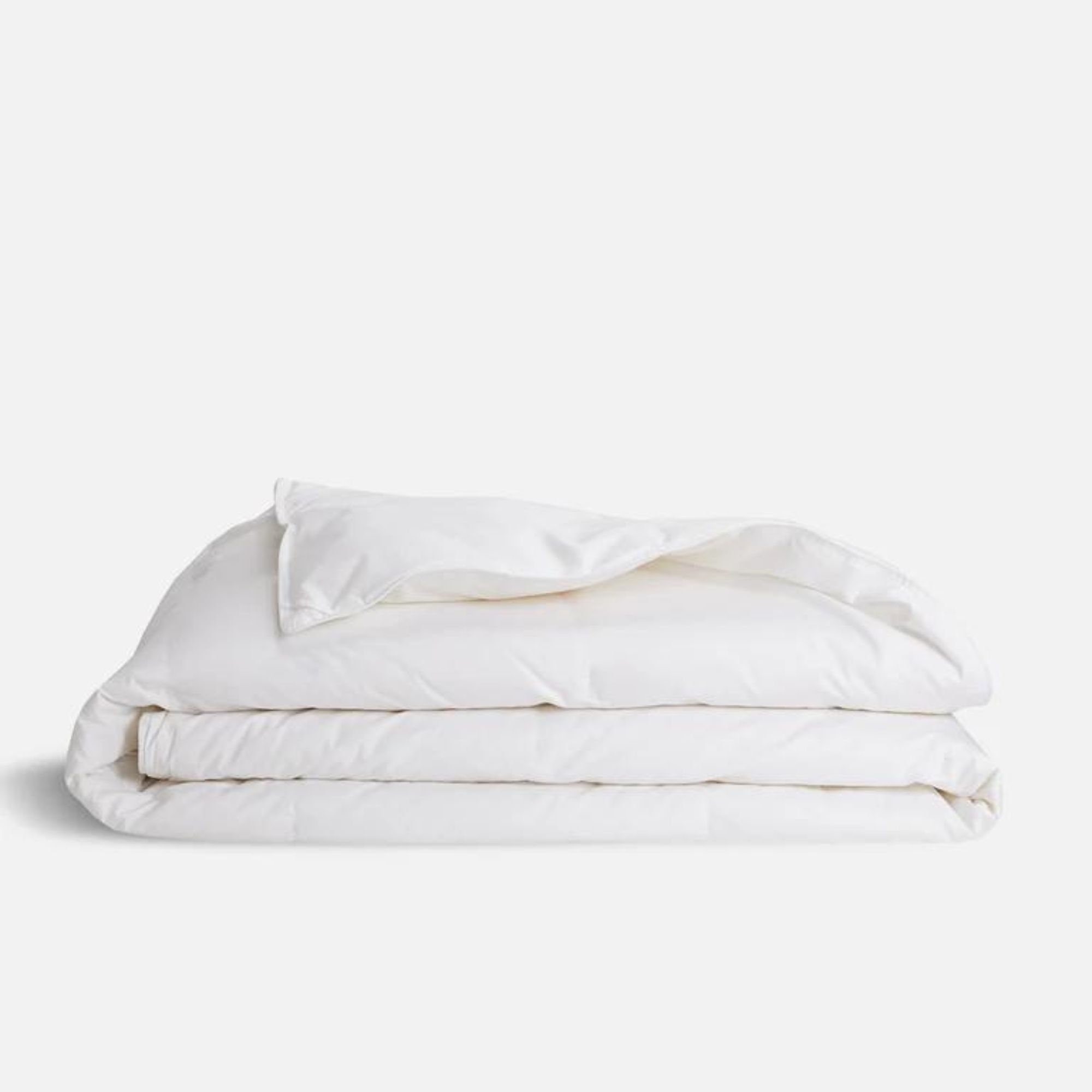
The Brooklinen Down Comforter is filled with fluffy down clusters, rather than individual feathers, to maximize warmth and minimize waste.

Wool is a natural thermoregulator and it's great for moisture-wicking. I recommend this comforter for anyone who suffers from night sweats or hot flashes.
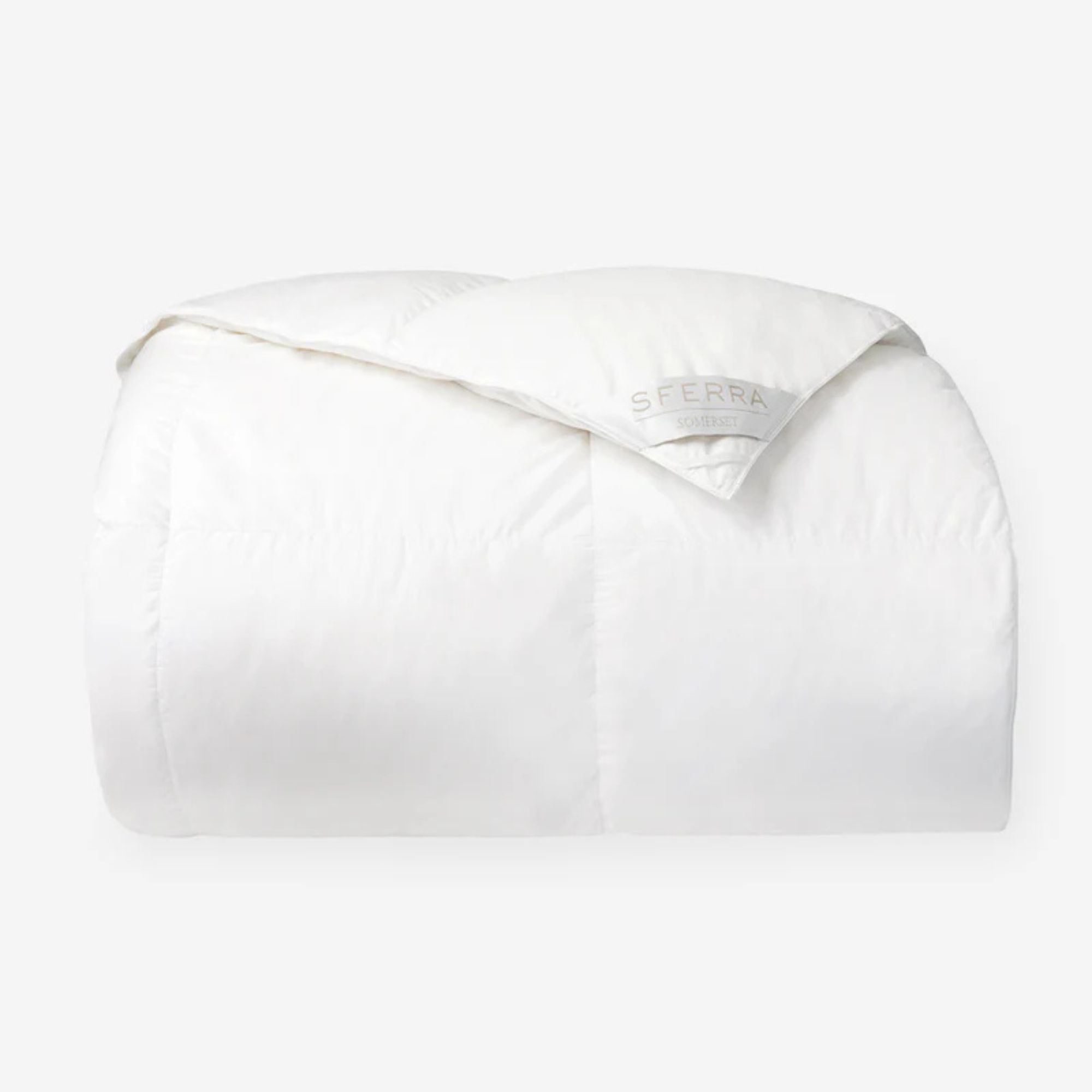
Admittedly, this warm comforter is very expensive, but I like to think of it as an investment. It's filled with responsibly sourced down, available in multiple densities to suit every kind of climate.
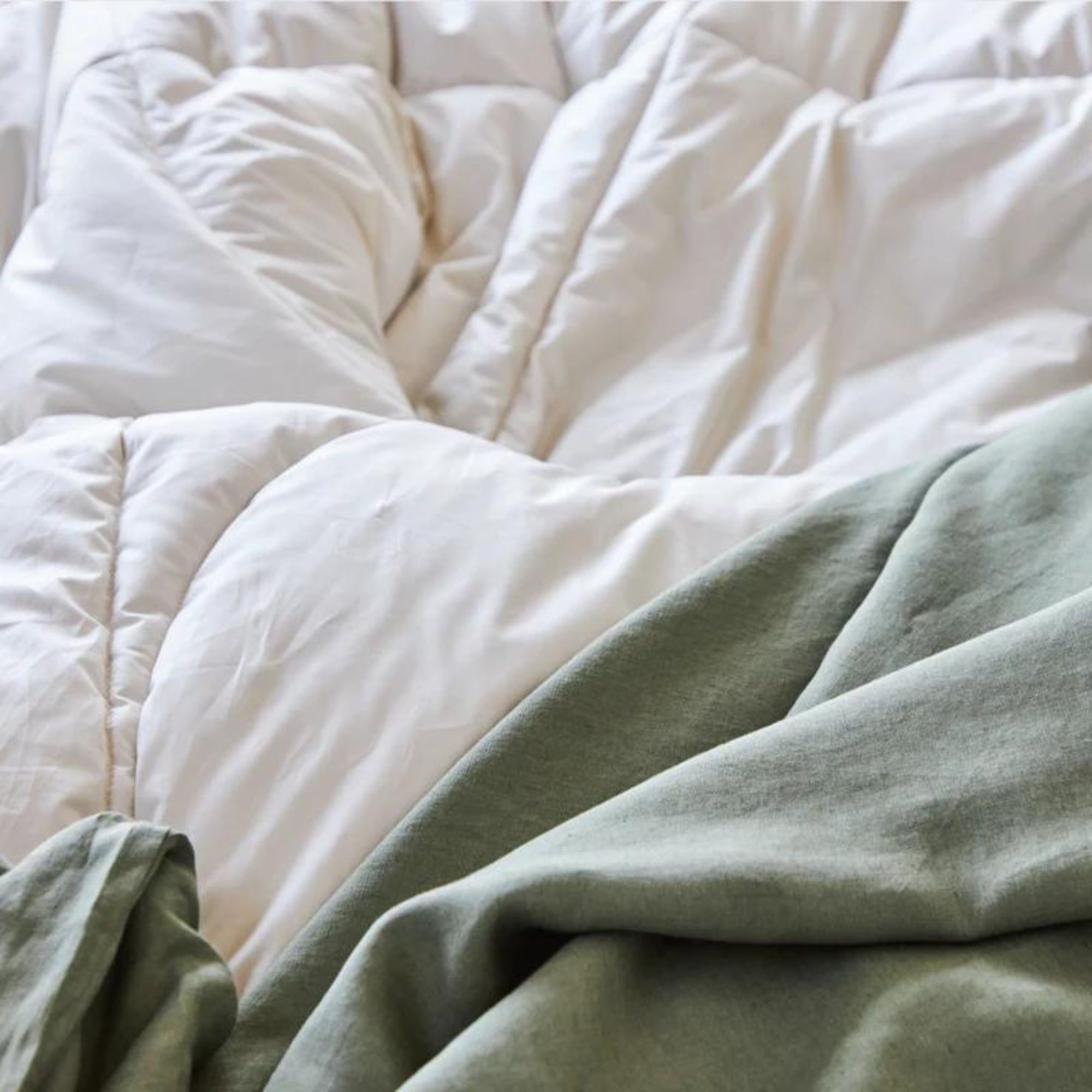
Filled with alpaca wool and covered in GOTS-certified cotton, this duvet insert gets rave reviews on the Avocado site. Shop the Lightweight layer for summer or opt for the All-Season.
The best duvet insert overall

1. Boll & Branch Down Duvet Insert
Specifications
Reasons to buy
Reasons to avoid
The Boll & Branch Down Duvet Insert offers something for everyone, whether you sleep hot or cool in a Twin bed or a California King. This comforter comes in three warmth weights to suit all seasons and sleep styles. I recommend the Lightweight for hot sleepers and warmer climes, the Ultraweight for cold sleepers and cooler climes, and the Midweight for everybody in between. Each insert comes with corner loops for easy attachment to duvet covers.
The clue is in the name: this duvet insert is filled with duck and goose down. This might raise alarms for animal lovers, but take heart that Boll & Branch down is sourced from American farms and certified by the IDFL Down Standard. That means every stage of production, from farm to factory, is investigated by an independent organization to ensure the highest standards of animal welfare.
I love the look and feel of the Boll & Branch Down Duvet Insert. All that down creates natural loft which makes for a beautiful bedspread. It's the sort of insert I'd expect to see in a high-end hotel or luxury spa. If in doubt, opt for the lighter weight: customer reviews indicate that the Down Duvet Insert errs towards the weighty side.
Admittedly, the Boll & Branch Down Duvet Insert is on the more expensive side: we're talking more than $400 for a Lightweight Queen. If you're looking for a down comforter, but you're working with a tighter budget, then I suggest you shop the Brooklinen Down Comforter, instead.
Attribute | Notes | Rating (out of 5) |
|---|---|---|
Look and feel | Naturally lofty; available in multiple weights | 5 |
Thermo-regulation | Tends to trap a little heat | 3 |
Ease of care | Machine-washable and dryer-safe | 5 |
Price | On the more expensive side | 3 |
The best down alternative duvet insert

2. Buffy Cloud Comforter
Specifications
Reasons to buy
Reasons to avoid
I started testing the Buffy Cloud Comforter back in the spring, but it's really come into its own this summer. Where down duvet inserts tend to trap heat, down alternative inserts are more breathable, and the Buffy Cloud Comforter made a great lightweight layer to get me through the heat and humidity.
Each Cloud Comforter incorporates and upcycles the materials from approximately 50 plastic bottles to minimize waste and maximize warmth. I was worried that I'd be able to feel the plastic shards through the shell of the comforter, but I can't. The plastic is spun into super-thin, super-soft fiberfill that looks and feels a lot like real down, without the animal produce.
The Buffy Cloud Comforter comes in 11 shades to complement any color palette. I opted for classic white, but you could choose between soft blues, bright pinks, and fresh greens. If you'd rather use it as a duvet insert, you can: the Buffy Cloud Comforter comes with corner loops for quick ties.
For a down alternative comforter, the Cloud feels exceptionally light and fluffy. Although it can't hold quite as much air as a real down comforter, it comes close. I'd recommend the Buffy Cloud Comforter for hot sleepers, eco-conscious shoppers, and anyone working with a tighter budget: this is one of the most affordable comforters on the market, starting at $116 for a Twin.
Attribute | Notes | Rating (out of 5) |
|---|---|---|
Look and feel | Lacks the loft of natural down | 3 |
Thermo-regulation | Ideal for summer nights and hot sleepers | 5 |
Ease of care | Machine-washable and dryer-safe | 5 |
Price | Highly affordable | 5 |
The best down duvet insert

3. Brooklinen Down Comforter
Specifications
Reasons to buy
Reasons to avoid
There's a difference between down clusters and duck feathers. Clusters are just the fluff, while feathers have the filament. Where most down comforters are filled with individual feathers, which can poke through the shell to scratch your skin, the Brooklinen Down Comforter is stuffed with down clusters for a fluffier feel. It's my favorite duvet insert for a nice, lofty bedspread.
As down comforters go, this one is pretty animal-friendly. Brooklinen sources their down sustainably from Canadian farms and meets the Downmark standard for quality assurance (that's not quite as big a deal as the International Down Standard, but it counts for something). Still, if you prefer to purchase vegan products, you'd be better off with the best down alternative comforter.
The Brooklinen Down Comforter comes in Lightweight, All-Season, and Ultra-Warm to suit every style of sleeper. Where the Boll & Branch Duvet Insert comes up pretty heavy, the Brooklinen Down Comforter feels pretty light: I'd only recommend the Lightweight option for seriously hot sleepers or summer use. I tried the All-Season insert, which still felt a little thin at the start of spring and end of summer, but I'm finding it much more comfortable now we're heading towards winter.
Attribute | Notes | Rating (out of 5) |
|---|---|---|
Look and feel | Light and fluffy with plenty of natural loft | 5 |
Thermo-regulation | Available in multiple weights to suit every climate | 5 |
Ease of care | Spot clean recommended, dry clean if needed | 2 |
Price | Comfortably middle-of-the-pack | 4 |
The best duvet insert for hot sleepers

4. Woolroom Organic Washable Wool Comforter
Specifications
Reasons to buy
Reasons to avoid
The best cooling comforter for night sweats is filled with wool. Hear me out: I was skeptical, too. Before I sampled the Woolroom Organic Washable Wool Comforter, I thought of wool as the stuffy, scratchy stuff that made up my old school sweaters. As a hot sleeper who suffers from night sweats, especially over the summer, I couldn't think of anything worse.
Turns out, wool is a natural thermoregulator and an excellent moisture-wicker. According to the 2024 Woolroom Clean Sleep Report, wool can hold up to 33% of its weight in water before it evaporates first thing in the morning. I first slept under the Woolroom Organic Washable Wool Comforter on the Woolroom Sleep Retreat, and I couldn't believe the breathability: so much better than my old down alternative duvet.
Fun fact for eco-conscious sleepers: the wool in the Woolroom Organic Washable Wool Comforter is totally traceable. When I scanned the QR code on my care tag, I could identify the exact farm and flock of sheep that made my wool. It's great to see this sort of transparency from a major bedding brand.
This wool comforter comes in four weights: Lightweight; Medium; Warm; and All-Season. I sleep best with the All-Season insert, but bear in mind that the price of the product increases with its weight. Also, the Woolroom Organic Washable Wool Comforter only comes in Twin, Full, Queen, and King sizes.
Attribute | Notes | Rating (out of 5) |
|---|---|---|
Look and feel | Looks thin and flat, but cotton case is silky smooth | 2 |
Thermo-regulation | Wool makes an excellent natural moisture-wicker | 5 |
Ease of care | Uniquely formulated for machine washing | 5 |
Price | Comfortably middle-of-the-pack | 4 |
The best duvet insert for cold sleepers

5. Sferra Somerset Duvet
Specifications
Reasons to buy
Reasons to avoid
Not everyone is a hot sleeper. As we head into winter, you might appreciate one of the best warm comforters to keep you cozy. Our expert tester, Alex Frost, sampled the Sferra Somerset Duvet back at the start of the year, and she's still raving about it. If it weren't for the prohibitive price, she'd get this duvet insert the full five stars.
Lightweight and lofty, but cozy underneath, the Sferra Somerset Duvet is suitable for all seasons. 'As much as I want to be warm under my duvet, I don't want to overheat,' says Alex. 'I had worried I might get too hot under a down duvet, especially with my space heater blaring in winter, but I never felt sweaty or uncomfortable.'
'If you're fed up with cheap comforters and duvets that only last a few years and make you feel too hot or too cold, then the Sferra Somerset Duvet Comforter might be for you,' says Alex. 'This is a splurgy item that might make the difference between hotel-quality comfort and less luxurious sleep.
Alex acknowledges that it's impossible to review the Sferra Somerset Duvet without mentioning the price, 'but I can't overstate how well I slept with this comforter. Four months into testing, I feel confident that the look and feel of the down will hold up over the years. FYI: Sferra does offer a 600+ goose-down fill with its Buxton Duvet line for roughly half the cost of the Somerset Duvet.'
Attribute | Notes | Rating (out of 5) |
|---|---|---|
Look and feel | Available in multiple densities; generous natural loft | 5 |
Thermo-regulation | Errs on the warmer, weightier side | 4 |
Ease of care | Machine-washable and dryer-safe | Row 2 - Cell 2 |
Price | Very expensive | 1 |
The best organic duvet insert

6. Avocado Alpaca Duvet Insert
Specifications
Reasons to buy
Reasons to avoid
'Down alternative' is a catch-all term that encompasses everything other than feathers. I've slept under comforters filled with breathable bamboo, smooth silk, and even sheepskin. For eco-conscious customers looking to try something new, I recommend alpaca wool.
Shearing the alpacas doesn't hurt them − in fact, getting rid of all that excess wool helps their skin to breathe. It's much better for the environment to buy an organic duvet insert that incorporates animal produce than it is to buy a cheap, synthetic comforter that will only end up in landfill.
Alpaca wool is naturally antimicrobial, so it should slow the spread of bacteria, mold, and mildew while keeping bed bugs and dust mites at bay. As Homes & Gardens' resident Sleep Editor, and a hot sleeper, I'm always raving about the natural benefits of wool: it's thermoregulating and moisture-wicking to keep us cool and dry, all year round.
While the Avocado Alpaca Duvet Insert is neither machine-washable nor dryer-safe, it's relatively easy to clean. Avocado recommends spot-cleaning to tackle smaller spills or stains and hanging the comforter in direct sunlight to restore freshness.
Attribute | Notes | Rating (out of 5) |
|---|---|---|
Look and feel | Looks thin and flat, but cotton percale case is crisp and cool | 2 |
Thermo-regulation | Wool is naturally moisture-wicking and thermo-regulating | 5 |
Ease of care | Spot clean only | 2 |
Price | Comfortably middle-of-the-pack | 4 |
Best duvet inserts and comforters – Side by side
| Header Cell - Column 0 | Sizes | Density | Fill | Shell |
|---|---|---|---|---|
Boll & Branch Down Duvet Insert | Twin/Twin XL, Full/Queen, King/California King | Lightweight, Midweight, Ultraweight | IDS certified down | Cotton |
Buffy Cloud Comforter | Twin/Twin XL, Full/Queen, King/California King | Lightweight | Recycled plastic | TENCEL eucalyptus lyocell |
Brooklinen Down Comforter | Twin/Twin XL, Full/Queen, King/California King | Lightweight, All-Season, Ultra-Warm | DOWNMARK certified down | Cotton sateen |
Woolroom Organic Washable Wool Comforter | Twin, Full/Queen, King | Light, Medium, Warm, All-Season | Organic wool | Organic cotton |
Sferra Somerset Duvet | Twin, Queen, King | Light, Medium, Heavy | White goose down | Cotton |
Avocado Alpaca Duvet Insert | Twin/Twin XL, Full/Queen, King/California King | Lightweight, All-Season | Alpaca fiber | Organic cotton |
How we test duvet inserts
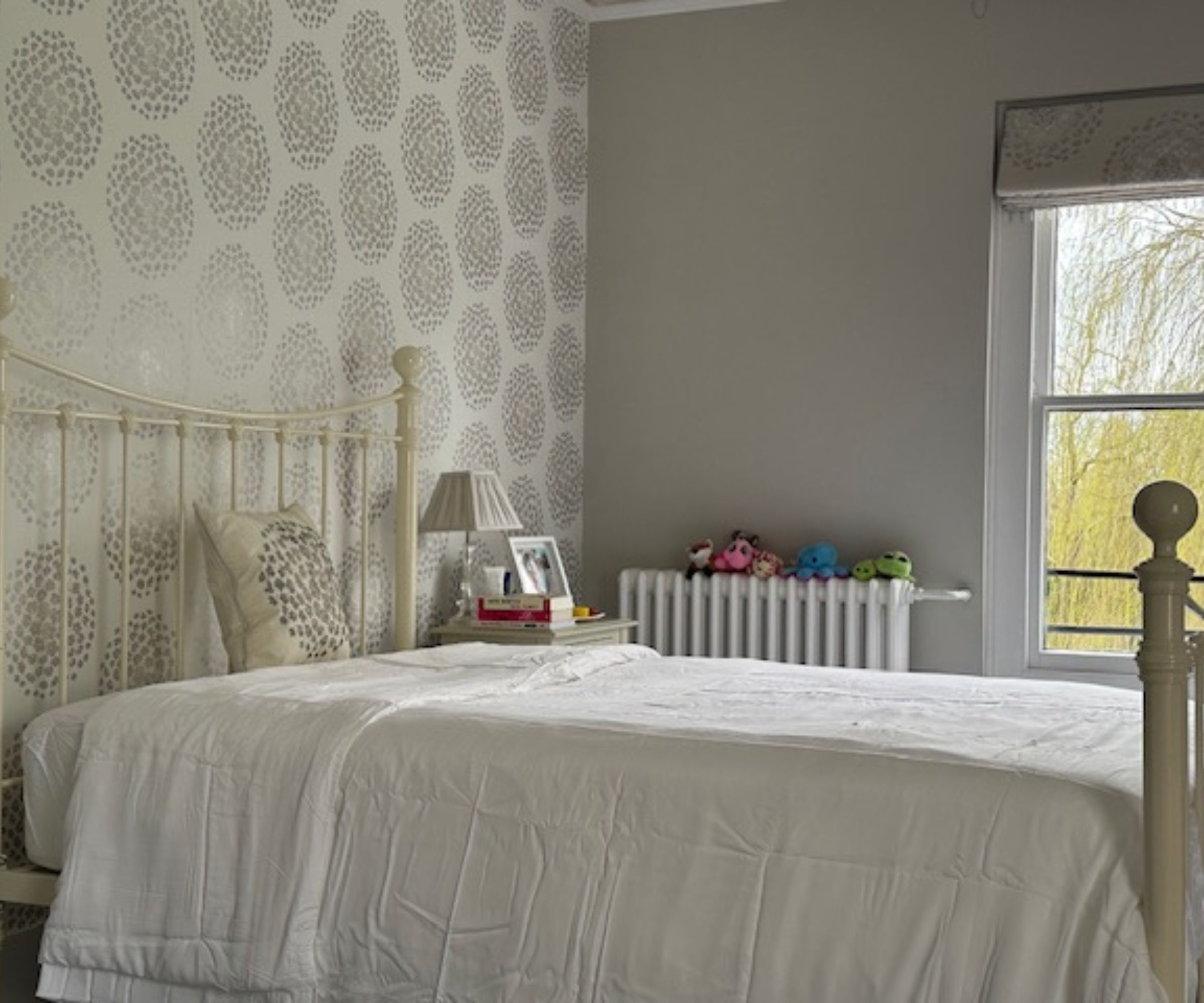
As Homes & Gardens' resident sleep writer, I lead a 10-strong team of product testers. Together, we represent a wide range of ages and sleep styles, and we live all across the country, from hot and humid cities in the South to cooler climes in the Pacific Northwest. We sleep under comforters for a minimum of 30 days in our own homes to give an accurate indication of long-term performance. To learn more about how we test comforters at Homes & Gardens, consult our expert guide.
We assess each duvet insert or comforter against the same criteria: look and feel; cooling; and ease of care. To assess comfort, we lie beneath the comforter and consider the weight of the fill, watching out for any sharp feather filaments or clumps of fiberfill. The best duvet inserts are lofty and full-looking, rather than thin and flat. To assess cooling, we switch off our AC and sleep beneath the comforter, making note of any nights we wake up in a sweat. We follow the cleaning instructions on the care tag to wash and dry the comforter, monitoring how it feels and how it looks before and after each wash.
We also consider the practical aspects of buying a duvet insert or comforter, from the range of sizes available to how it looks on the bed. We like to compare our findings against verified reviews to get a better indication of long-term use. Finally, we bring it all back to the price of the product to help you determine value for money.
How to choose a duvet insert
Select your fill type
There are two categories of duvet fill: natural and synthetic. Natural duvets feel lighter and fluffier: they're better for thermoregulation, but they're less suitable for vegans or anyone who suffers from allergies.
- Down: made from the fluffy part of feathers (the quills), down duvets feel light and airy, and they offer the best level of warmth. You might read about Hungarian, Swedish, or Canadian down, which is naturally designed to keep warm in cold weather. I recommend down duvets for cool sleepers and winter weather.
- Feather: heavier than down, a feather duvet is filled with both quills and barbs (the filament of the feather). These duvets are stronger, more robust, and often less expensive, creating weight and warmth for less.
- Silk: if you're allergic to feathers, but you still want to sleep under a natural duvet, then silk could be a good option. Like down, it's lightweight and thermoregulating, but it's often more expensive.
- Wool: another natural alternative, wool is an excellent moisture-wicker. According to the Woolroom Clean Sleep Report 2024, wool can hold up to 33% of its weight in water (or sweat). It's highly absorbent to keep your bed and body dry.
Synthetic duvets are better for sleepers with sensitive skin, but they lack a little of the natural loft that makes a beautiful bedspread.
- Microfiber: filled with extra-fine fibers, these duvets feel ultra-lightweight.
- Hollowfiber: these filaments feel thicker, more wiry and durable than microfiber. They're often coated with a hypoallergenic treatment to soothe sensitive sleepers.
Find the right tog rating
You might see the term 'tog' plastered over the duvet packaging or printed on the care tag. 'Tog' stands for 'Thermal Overall Grade' and it's measured on a scale from 1 to 15.
The higher the tog, the warmer the duvet. You might like a lighter duvet for summer (somewhere between 1 and 7 tog) and a warmer one for winter (10 tog or above). You could buy an adjustable duvet to see you through all four seasons or opt for an all-season weight (from 7 to 10 tog). If you're wondering, 'what duvet tog do I need?', I suggest you consult our expert guide.
Choose the right size
Your average duvet insert or comforter comes in all the standard sizes, from Twin to California King, but they're designed to be longer and wider than your mattress. Most manufacturers follow the 12-16 rule: that a duvet should be 12 inches longer and 16 inches wider than the mattress.
If you want to create an oversized drape, you can always size up. If you share a bed with a partner, but you'd rather sleep with separate duvets, then I suggest you shop for two Twin XLs rather than one Queen.
FAQs
What duvet inserts do hotels use?
Most hotels use goose-down duvet inserts. They're light and fluffy, suitable for all seasons, with plenty of loft to make a beautiful bedspread. If you're interested, I've interviewed top hoteliers and head housekeepers to work out: 'which bedding do luxury hotels use?'
Where is the best place to buy comforters?
I've compiled a list of the best places to buy comforters. I've even picked out my favorite comforters from specialist sleep stores, such as Saatva and Brooklinen, to streamline your shopping experience.
Once you've bought one of the best duvet inserts, it's time to dress the rest of the bed. I've ranked and reviewed 9 sets of the best bed sheets to suit every style of bedroom and every size of budget.
Sign up to the Homes & Gardens newsletter
Design expertise in your inbox – from inspiring decorating ideas and beautiful celebrity homes to practical gardening advice and shopping round-ups.

Emilia is our resident sleep writer. She spends her days tracking down the lowest prices on the best mattresses and bedding and spends her nights testing them out from the comfort of her own home. Emilia leads a team of testers across America to find the best mattress for every sleep style, body type, and budget.
Emilia's quest to learn how to sleep better takes her all around the world, from the 3Z mattress factory in Glendale, Arizona to the Hästens headquarters in Köping, Sweden. She's interviewed luxury bedding designers at Shleep and Pure Parima, as well as the Design Manager at IKEA. Before she joined Homes & Gardens, Emilia studied English at the University of Oxford.
-
 Plants never to grow next to fruit trees
Plants never to grow next to fruit treesExpert advice on which plants to keep away from fruit trees to encourage a healthy harvest
By Jacky Parker Published
-
 Martha Stewart's tips for arranging daffodils are unbelievably simple and effective – it's the only flower advice you need this springtime
Martha Stewart's tips for arranging daffodils are unbelievably simple and effective – it's the only flower advice you need this springtimeMartha shows us that we can create gorgeous bouquets of this seasonal flower by simply trimming the stems and placing them in specific vases
By Hannah Ziegler Published